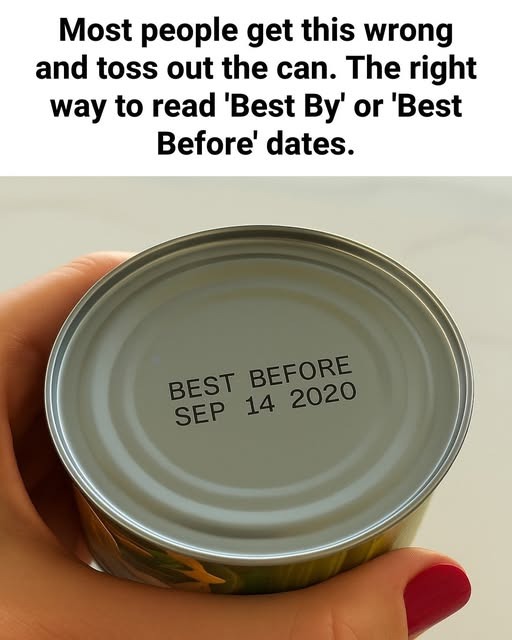Let’s be clear — just because a can is past its printed date doesn’t mean it’s gone bad. That date is about optimal quality, not a biological countdown. If the can looks normal — no rust, bulging, dents, or leaks — chances are the food inside is still fine.
When you open an older can, use your senses:
- Look — The food should still resemble its original color and texture.
- Smell — Any sour, rancid, or metallic odor means toss it.
- Taste (carefully) — If it smells and looks fine, try a small amount. A metallic or “off” flavor means it’s better to discard it.
Most canned goods past their “Best By” date are perfectly safe, but the texture or taste might have dulled slightly. Green beans may lose crispness, and soup might taste less vibrant — but they’re still nutritious and edible.
The Real Danger Signs
Despite their impressive shelf life, canned goods can still become unsafe if damaged. Certain warning signs should never be ignored:
- Bulging cans: This can indicate gas buildup from bacterial activity — a classic sign of botulism contamination.
- Leaking cans: Any moisture, especially if sticky or discolored, means the seal has been compromised.
- Deep rust or dents along the seams: These can break the airtight seal and allow bacteria in.
- Foul smell or fizzing upon opening: Gas release or a bad odor means bacteria have been at work — throw it away immediately.
The biggest concern with damaged cans is Clostridium botulinum, a bacteria that produces a deadly toxin causing botulism. While rare, botulism can be fatal even in small amounts. It thrives in oxygen-free environments — exactly what a compromised can provides. If a can is bulging, leaking, or hissing unnaturally when opened, don’t risk it.
How to Store Canned Goods Safely
To maximize shelf life and safety:
- Keep them cool and dry. Avoid garages, sheds, or attics where temperatures fluctuate.
- Rotate stock. Follow the “first in, first out” rule — use older cans before newer ones.
- Check periodically. Once or twice a year, inspect for rust, dents, or swelling.
- Avoid storing near heat sources. Prolonged exposure to high temperatures accelerates deterioration.
If stored correctly, even older cans can remain safe for decades — though taste and color may fade.
The Problem With Food Waste
Every year, millions of tons of food are thrown away because of misunderstood labels. Studies show that over 80% of consumers believe “Best Before” means the product is unsafe after that date. In reality, it simply means it might not taste perfect.
This confusion leads to enormous waste. Perfectly good food ends up in landfills, while households spend unnecessary money replacing it. Canned goods, in particular, are among the most wasted — despite being some of the most durable food products available.
Learning how to read and interpret food labels isn’t just about thrift; it’s about sustainability. Reducing waste helps conserve resources and supports food security by ensuring edible products are used rather than discarded.
The Bottom Line
Canned food is one of the safest and most stable forms of preservation ever invented. As long as the can is in good condition and has been stored properly, its contents can remain safe for years — sometimes even decades — past the printed date. The key is to trust your senses and use common sense.
Next time you find a dusty can of soup or beans hiding in the back of your pantry, don’t rush to throw it away just because it’s “expired.” Check the can, inspect the contents, and decide with care.
Understanding the science of canned preservation not only protects your wallet but also helps combat one of the biggest contributors to global waste — our collective fear of “expired” food.
So before you toss that old can, remember: a date on a label doesn’t decide whether something’s safe — you do.
ADVERTISEMENT

